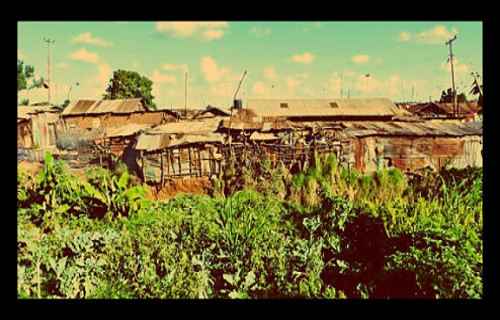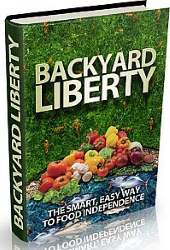How to Farm Even in a Slum
As the migration of people from rural areas to cities intensifies, the number of people living in slums are growing exponentially. According to the U.N.’s Special Rapporteur on Adequate Housing, there are currently more than 200,000 slums, shanty towns and informal settlements around the world. Prior even to the global economic crisis of 2008, nearly a third of all city dwellers lived in slums. This number continues to grow dramatically; there will be one billion more people living in slums within the next twenty years.
One of the primary concerns facing the astonishing proportion of the global population living in impoverished slum communities is food security. Given this, farming within slum communities offers huge benefits. Being able to produce food not only makes slum populations less dependent on government and NGO subsidies and aid but makes them less vulnerable to the fluctuating prices of the global food market. Further, small-scale urban farming provides occupational and entrepreneurial opportunities, often to women who would otherwise have none.
Urban farming can also improve health by supplying healthier food options which would otherwise be too expensive to eat. Finally, urban farming enhances climate change resilience by reducing the environmental costs of mass agricultural production and distribution.
The benefits of small-scale farming in slums are potentially massive. But urban agriculture also faces a number of challenges. Contaminated soil from the rampant pollution omnipresent in slums is often an issue. There can also be a total lack of available land. Cramped conditions contribute to a lack of sunlight. Water availability and quality can also be limited.
Given these limitations, how does one farm in a slum? Here are four real-world slum farming operations:
1. “Farm-in-a-sack” projects, Nairobi: One project, begun by the Italian organizations Cooperazione Internazionale (COOPI,) doles out seedlings to families in Nairobi’s Mathare slum. COOPI brought in rural agricultural experts to educate community groups on how to farm vegetables in slums and handed out one sack and 43 seedlings to each family participating in the project. The vegetables are ready within a few weeks and the plants can be harvested multiple times over the course of a year. Not only do the newly minted urban farmers gain additional nutrients, any surplus can be sold for a profit. Similar projects in Nairobi’s Kibera slum also see great success. According to Map Kibera Trust, sack farming increases weekly household income by at least $5 per week and adds two to three meals a week-massive gains in a slum notorious for its crushing impoverishment.
2. Harnessing technology to farm in Neza-Chalco-Itza, Mexico City: The Neza-Chalco-Itza slum in Mexico City is the largest in the world with an estimated four million people. Thus, creative food solutions are crucial to the livelihood of the people living there. To that end, ANADEGES, a group of 20 autonomous NGOs in Mexico, developed and orchestrated a project that aims to help people develop their own capacity to produce organic food from their backyards, patios, and rooftops. Utilizing discarded containers and readily available waste matter, the project has been successful in designing innovative ways for people to grow their own food.
3. Urban agriculture in Bamenda, Cameroon: With a population of more than 900,000 and high food prices, life is not easy for slum dwellers in Bamenda. However, an estimated 5,000 residents have turned to farming in order to supplement their diets and incomes. They utilize backyards, empty lots, roadsides, abandoned corridors and any other available land space to grow tomatoes, cabbages, onions, okra, hot pepper, ginger, and maize. In the words of Richard, a driver by profession who uses farming for food an additional income, “it’s a good experience because it is from the slums that we manage and feed ourselves. And then we feed the other town dwellers.” Finding water for the crops is the major challenge in Bamenda, requiring traveling great distances to retrieve it from swamp areas. The challenge to collect water, however, is well worth it, as Richard says, because farming “is where we earn our own living.”
4. Kibera Youth Reform Organic Farm, Nairobi, Kenya: At an estimated one million residents, Nairobi’s Kibera is considered the largest slum in Africa. In 2008, it had erupted in clashes in the wake of Kenya’s flawed presidential elections which intensified the slum’s already dire food insecurity. Concerned, Su Kahumbu, the managing director of one of Kenya’s pioneer organic produce companies, revolutionized a solution. Working with a group of young, unemployed reformed criminals interested in farming the slum, Kahumbu cleared a half-acre rectangle patch of land that had been piled three feet high with garbage and human waste. Her brother laid down irrigation pipes linked to a water tank and the group added vegetable scrap compost to the plot. Within months, Kenya’s first organic slum farm was producing multiple crops and soon turning a profit, demonstrating its sustainability.(source)
Urban farming brings food, money and life in Kibera. With a fast rising population in Nairobi, the demand for more and better food is growing tremendously. Still, many people from rural areas come to the city because they don’t want to farm. They think farming is something for old people, but there’s money in farming. Knowledge is the key, especially about good agricultural practices, knowledge about the market and knowledge about the fun of farming. Only if people enjoy farming, the image of farming will change.
Bag Gardening Farming made easier by using UV(Ultraviolet) ray sacks. Julia Naitore from Real Impact explains how you can grow different crops in one sack.
Growing vegetables in sacks is a new farming initiative. For farmers who have small farming land, this new farming technique is really appropriate, especially for those who live in the drought prone areas.
On just a quarter-acre of land, you can produce fresh, organic food for a family of four — year-round! This comprehensive guide to homesteading provides all the information you need to grow and preserve a sustainable harvest of grains and vegetables.
RELATED : The Best 5 Gardening System to Grow Food for all Your Family Every Year Even in a Desert
RELATED : 100-Year-Old Way to Filter Rainwater in a Barrel
Don’t wait until food becomes scarce; start preparing for the future now by becoming as self-reliant as possible. Your long-term chances of survival could very well depend on your ability to feed yourself and your family without relying on someone else.
The Lost Ways (Learn the long forgotten secrets that helped our forefathers survive famines,wars,economic crisis and anything else life threw at them)
Survival MD (Best Post Collapse First Aid Survival Guide Ever)
Backyard Innovator (A Self Sustaining Source Of Fresh Meat,Vegetables And Clean Drinking Water)
Blackout USA (EMP survival and preparedness)
Conquering the coming collapse (Financial advice and preparedness )
Liberty Generator (Build and make your own energy source)
Backyard Liberty (Easy and cheap DIY Aquaponic system to grow your organic and living food bank)
Bullet Proof Home (A Prepper’s Guide in Safeguarding a Home )
Family Self Defense (Best Self Defense Strategies For You And Your Family)
Survive Any Crisis (Best Items To Hoard For A Long Term Crisis)
Survive The End Days (Biggest Cover Up Of Our President)
Drought USA (Discover The Amazing Device That Turns Air Into Water)


